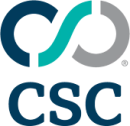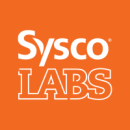There is a secret to building an innovative engineering team: Hire people that are different from you.
While it’s a bit of generalization, the idea is backed by plenty of research. Diverse teams are significantly better at making business decisions and companies that value diversity outperform competitors by 35 percent.
Which is why Built In interviewed three engineers who have seen firsthand the difference working on a diverse team can really make on team culture and the business.
CSC provides business, legal, tax and digital brand services to companies around the world.
What does diversity mean to you in the context of an engineering team? How does having a diverse team enhance your overall collaboration, innovation or culture?
Diversity within an engineering team means bringing together individuals with varied cultural backgrounds, life experiences and perspectives. This richness of thought leads to more effective problem-solving, as team members approach challenges from multiple angles, often uncovering solutions that might not emerge in a more homogenous group.
Diverse teams are naturally more attuned to designing products that are inclusive and accessible. They tend to consider a broader range of user needs and expectations, which results in solutions that better serve a wider audience.
Finally, innovation thrives and shines in diverse environments. When people with different viewpoints collaborate, they challenge assumptions and push beyond the status quo, fostering a culture where creativity and progress are not only encouraged but expected.
How does your team or company make diversity and inclusion an intentional part of hiring?
Our team takes a very intentional approach to embedding diversity and inclusion into our hiring practices. One way we do this is by actively recruiting across different regions to ensure cultural diversity is represented in our candidate pool. This helps us build teams that reflect a wide range of perspectives and lived experiences.
We also partner with organizations like Tech Impact, which helps create pathways for young adults looking to transition into tech careers. These partnerships not only diversify our talent pipeline but also support our broader workforce development goals.
Additionally, we maintain a continuous flow of interns who are brought in to support specific team needs. Many of them transition into permanent roles as opportunities arise, allowing us to nurture talent from the ground up while fostering an inclusive environment where growth and development are prioritized.
What advice would you give to other teams looking to foster more diverse perspectives and ideas in their engineering org?
Actively seek to understand cultural differences. Sometimes, simply inviting someone to share their input directly can make all the difference in helping them feel seen and heard. Creating space for every voice is essential.
It’s also important to recognize and elevate contributions from individuals across regions, experience levels and backgrounds. By identifying key contributors and publicly celebrating their accomplishments, teams can build visibility and inspire cross-functional collaboration.
I also recommend offering stretch assignments and collaborative projects to team members from diverse backgrounds. These opportunities not only help individuals grow but also bring fresh thinking into the work, ultimately strengthening the team’s collective creativity and resilience.
Sysco LABS uses customer and market intelligence, data-driven insights and agile technology development to assist the foodservice ecosystem.
What does diversity mean to you in the context of an engineering team? How does having a diverse team enhance your overall collaboration, innovation or culture?
Diversity in engineering is about bringing together people who think differently, whether that difference comes from culture, background, experience level, or problem-solving style.
On our team we’re spread across the U.S. and Sri Lanka, so we naturally see a range of perspectives and ways of working. A diverse team pushes us to collaborate more intentionally.
I think about diversity in terms of roles and focus areas (on our team, we have iOS Android, QA and product input) where each discipline views the same problem from a different angle.
We’ve built structures that help make the most of that mix of perspectives. We have tech design reviews that bring engineers together to share feedback and learn from each other. Dedicated guilds for iOS Android and QA allow our teams to connect across time zones to grow in their areas. Shared bug retros and a team newsletter celebrate wins and lessons across the org.
We also leave space to reflect before big decisions, which helps everyone contribute their best thinking.
How does your team or company make diversity and inclusion an intentional part of hiring?
We’re intentional about building balanced teams in both skills and perspectives. Our goal is to have interview panels include engineers from both the United States and Sri Lanka so candidates can meet people from across the org. It gives them a sense of our culture and helps us evaluate more fairly since each interviewer looks for something different.
We also look for traits that make people successful in a team environment like curiosity, empathy and strong communication. Working across those regions and time zones means we can’t rely on impromptu conversations. We have to slow down, communicate clearly and really listen. This has made our culture more thoughtful and inclusive.
All these qualities are just as important as technical depth when you’re collaborating across skill levels and different parts of the world.
Our goal is to create teams where everyone feels included and confident sharing their ideas from the start, as that’s when people do their best work.
What advice would you give to other teams looking to foster more diverse perspectives and ideas in their engineering org?
Diversity is really about valuing perspectives equally and creating an environment where everyone feels comfortable sharing ideas, even when they don’t perfectly align.
Encourage collaboration across roles and regions and not just within them. Pair people from different backgrounds on projects, rotate who leads discussions and create opportunities for ideas to come from anywhere.
Build diversity into how you plan, communicate and celebrate your team. When people see their input being heard, it reinforces a culture where new ideas can thrive.
When distinct, unique viewpoints come together, the end result is always stronger.
Rain’s technology makes it easy for companies — from fast-growing startups to global fintechs — to integrate stablecoins into their products, platforms and payment flows.
What does diversity mean to you in the context of an engineering team? How does having a diverse team enhance your overall collaboration, innovation or culture?
Diversity in engineering means both technical diversity (frontend to embedded specialists) and personal diversity of backgrounds and lived experiences. Growing up in Flatbush, Brooklyn, diversity was my norm, teaching me that many 'established truths' are often just assumptions.
Research shows diverse teams outperform homogeneous ones in creativity and problem-solving, with diverse companies reporting higher innovation revenue. This happens through 'knowledge spillovers' when different mental models combine to create innovative solutions.
When diverse perspectives collaborate, solutions become more robust. Someone with accessibility experience might catch usability issues others miss, while different cultural contexts improve global relevance.
Diversity prevents echo chambers by challenging assumptions and identifying blind spots. It also creates a positive recruiting cycle — when candidates see people with similar backgrounds thriving, it reduces the stress of being 'different' and attracts broader talent, continuously strengthening our team with engineers from all backgrounds, which enhances collaboration and innovation.
How does your team or company make diversity and inclusion an intentional part of hiring?
Our approach combines organic and structured elements. Starting with a diverse team created a positive cycle where representation naturally attracts diverse candidates.
We've implemented several intentional practices: embracing remote work and global hiring in the engineering team broadens our talent pool across regions and backgrounds. We craft job descriptions with inclusive language, avoiding terms that might discourage certain groups, ensuring our requirements reflect actual job needs rather than creating barriers.
Our interview process focuses specifically on job functions through skills-based assessment, evaluating candidates on their abilities rather than subjective factors that might introduce bias.
This combination of representation, inclusive practices and skills-based evaluation has made diversity an intentional part of our hiring. The result is an engineering team with different perspectives and experiences — which contributes to our ability to innovate and solve complex problems.
What advice would you give to other teams looking to foster more diverse perspectives and ideas in their engineering org?
Critically examine your sourcing strategies — you cannot achieve more diversity than exists in your candidate pool. Expand beyond elite schools by partnering with coding bootcamps, community colleges and universities with diverse populations. Consider candidates with non-traditional backgrounds who demonstrate skills through open-source work and community tech initiatives.
Understand that diverse viewpoints won't always emerge willingly. Actively elevate and sponsor people to share their ideas. Create multiple forums beyond standard meetings — one-on-ones, casual conversations and lunch-and-learns provide safer spaces for different perspectives. As a leader, solicit input from quieter team members and acknowledge their contributions.
Create an environment where different perspectives are valued through inclusive communication and fair promotion processes that don't favor particular profiles.
Focus on retention through regular check-ins, mentorship and creating leadership opportunities for everyone. This work requires continuous commitment and willingness to adjust approaches as you learn what works best for your organization.











